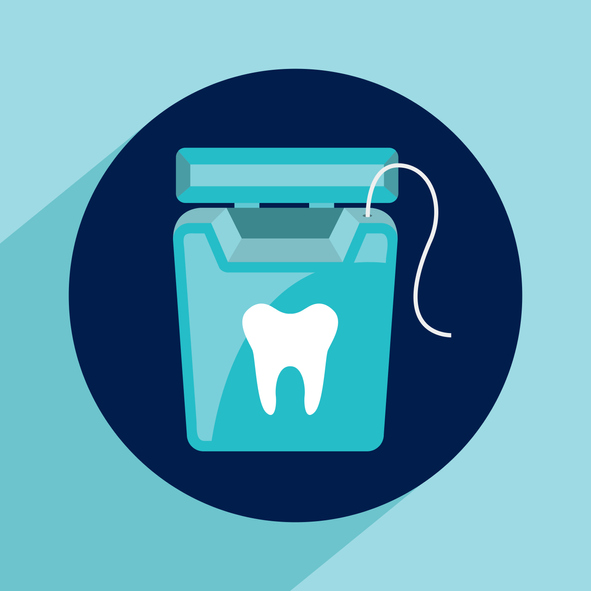
08 Dec Are You Flossing Right? Make Sure to Follow These Tips
If you’ve been feeling guilty about your dentist’s pleas to floss more often, you’re not alone. We all know we’re supposed to floss once a day, but research suggests that only a third of us actually do it. From there, a quarter of us floss a few times a week, around 15% floss a few times a month, and around 13% never floss at all.
In other words, you’re not the only person to forget this oral care habit now and then. However, that makes it even more important to consider your flossing technique!
Here’s what our Tampa and Wesley Chapel dentistry clinic often tell patients to keep in mind.
Timing Your Oral Care Habits
First things first: let’s discuss when to floss your teeth.
Always floss before you brush your teeth. This helps loosen and pull plaque and food particles from between your teeth, making it easier to brush them away.
If you forget to floss until after you’ve brushed your teeth, you’re allowing loosened particles to sit on your teeth for longer! A mouthwash rinse can sometimes help, but it may not be as effective as removing the loosened plaque as brushing is.
Keep in mind that this doesn’t mean you should skip flossing altogether if you forget until after you brush or use mouthwash. Delayed flossing is still better than no flossing at all.
Next, how long should it take to floss your teeth?
If you’re giving each tooth the attention it needs, flossing should take around two to three minutes. Combined with two minutes for brushing, this means your oral care habits should take under five minutes in total.
Types of Floss to Use
Waxed and unwaxed floss are some of the most common options. These thread-like flosses are affordable and easy to find. However, these types of floss can be hard for some people to use, and they don’t always fit into tight spaces in the back of your mouth.
Dental tape, which is flatter than traditional floss, is another good option. If the spaces between your teeth are large, this option may be more comfortable.
Disposable (or “pre-threaded”) flossers include either waxed or unwaxed floss, and their handheld shape makes them accessible and easy to use. They’re also great for areas that are harder to reach, like the back molars.
Super floss is spongy and comes with a special threader. It’s best for people with braces or bridges.
Interdental brushes are tiny brushes that are similar to pipe cleaners. You push them between your teeth to scrub.
Water flossers can be a splurge, but they’re great for people who have trouble using standard dental floss. If it’s difficult for you to floss by hand, a water flosser can keep your teeth clean.
As with any product, check for the American Dental Association’s seal of approval before buying and using a new type of floss.
Proper Flossing Technique
Effective timing is great, but it’s also important to know how to floss correctly.
If you’re using any type of regular floss, start by pulling about 18 inches of floss from the dispenser. One of the easiest ways to floss is to wind either end around your thumbs and hold both ends in place with your pointer fingers.
You can also use a shorter strand of floss, around 12 inches, and tie the ends together to make a circle. This can make it easier to get a grip on the floss, and it’s great for anyone with limited dexterity.
To start flossing, slide the floss between two of your teeth. Angle the floss so it makes a “C” shape around your tooth. Slide the floss up and down across the surface of your tooth, going all the way down to the gum line.
Make sure to be gentle. The goal isn’t to scrape, yank, or snap the floss: all you’ll do with rough motions is bruise your gum tissue.
Repeat this motion between the same teeth, this time pulling the “C” in the opposite direction. This allows you to dislodge plaque from both sides of every tooth.
Continue flossing all of your teeth. Make sure to remember where you started from to ensure you don’t miss any. As you work, insert a fresh section of the floss between your teeth each time to get a more thorough cleaning.
Always throw the floss away when you’re finished. Using the same floss again can reintroduce bacteria into your mouth.
What If It Hurts?
If you haven’t flossed your teeth in a while, it may be difficult the first time. You might have a hard time getting the floss between your teeth, and you might see a bit of blood from the gum line.
Sometimes, people who begin flossing again after a long break may cause minor bruising to the gums. Like any tissue, the gums may need time to get used to the new cleaning regimen.
In most cases, mild sensitivity or bleeding should go away after you’ve flossed a few times. If it doesn’t, contact your dentist. You might have gingivitis or gum disease, which makes your gums tender and swollen. Tooth decay can also cause pain or sensitivity.
Tampa Dentistry Experts Are Here To Help
Now that you know more about the importance of flossing and how to do it right, you’ll need to pair the tips above with proper brushing techniques to keep your teeth clean. These habits can help improve your oral health. However, that doesn’t mean you should skip your professional check-ups!
In addition to your usual oral care habits, your dentist can remove any lingering plaque or decay before problems arise.
At McIlwain Dental Specialists, we’re here to help improve the condition of your smile, even in hard-to-reach areas. Contact us for your next regular cleaning. We’ll be happy to help you brush up on proper flossing techniques!


